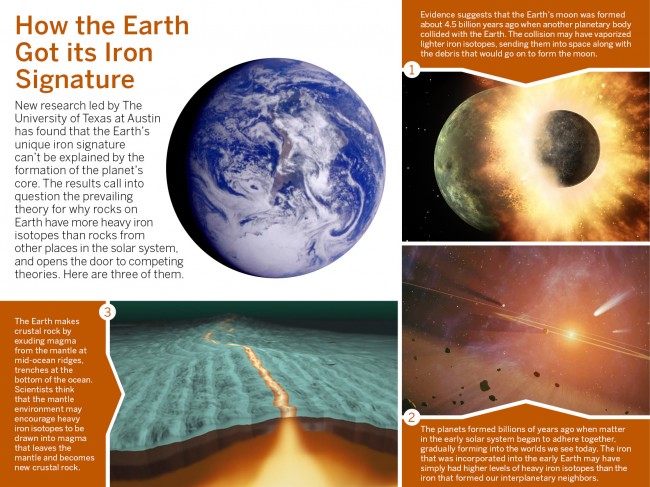
An infographic describing three theories on how the Earth got its iron signature.Designed by Laura Martin/The University of Texas at Austin Jackson School of Geosciences. Images 1 and 2 from NASA/JPL-Caltech, Image 3 from X-Science, Earth from NASA/JPL.
New research from The University of Texas at Austin reveals that the Earth’s unique iron composition isn’t linked to the formation of the planet’s core, calling into question a prevailing theory about the events that shaped our planet during its earliest years.The research, opens the door for other competing theories about why the Earth, relative to other planets, has higher levels of heavy iron isotopes...
Read More









Recent Comments